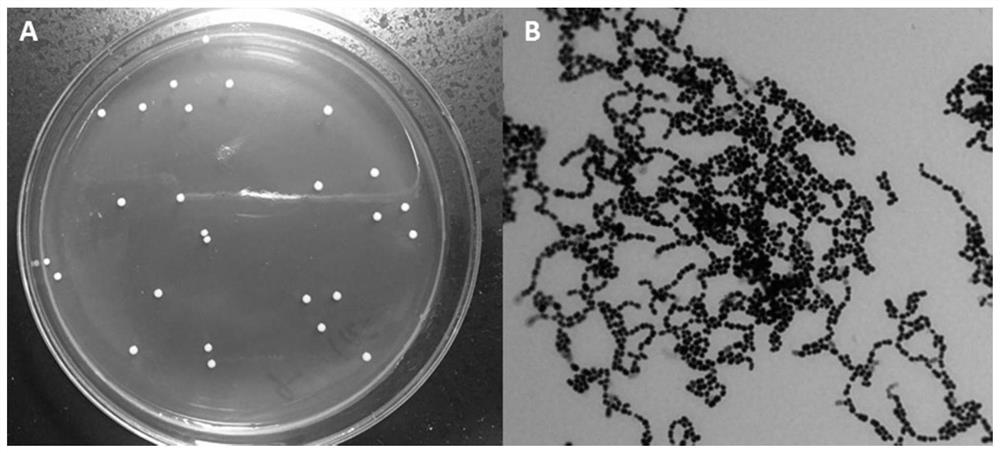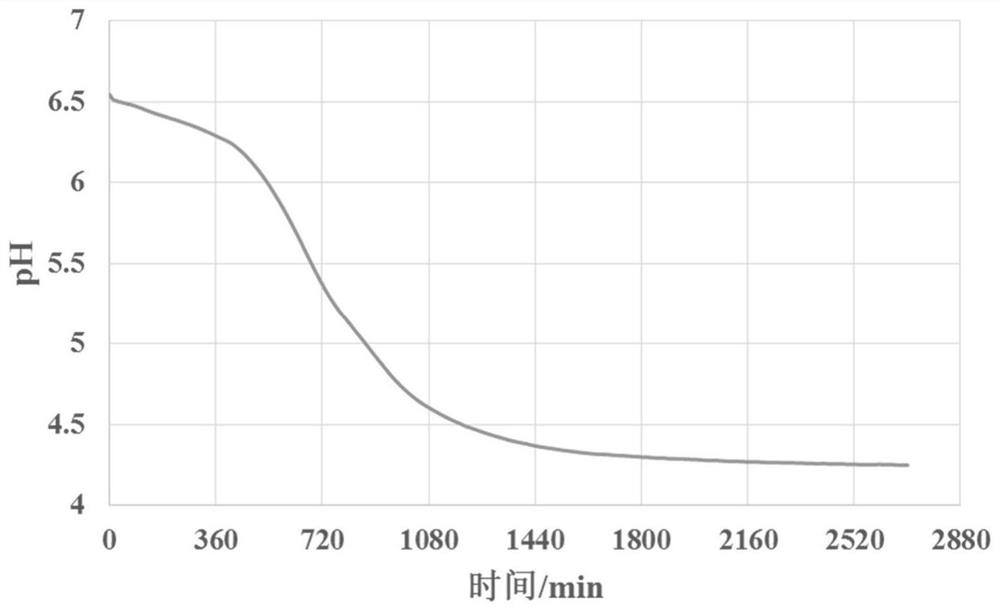Lactococcus lactis capable of improving oral health and application of lactococcus lactis
A Lactococcus lactis, healthy technology, applied in the field of microorganisms, can solve the problems of side effects, etc., and achieve the effects of good fermentation performance, good antagonistic characteristics, and good aggregation ability
- Summary
- Abstract
- Description
- Claims
- Application Information
AI Technical Summary
Problems solved by technology
Method used
Image
Examples
Embodiment 1
[0045] Example 1: Inhibitory effect of Lactococcus lactis on oral harmful bacteria
[0046] Inhibitory effect on Streptococcus mutans
[0047] Streptococcus mutans (Streptococcus mutans, ATCC 25175) was cultured in BHI medium at 37°C for antibacterial experiments. The antibacterial properties of the bacterial strains of the present invention were measured by a double-layer plate punching diffusion method. Pour the sterilized 1.5% agar into a sterile petri dish. After solidification, drop the sterilized solid medium (containing 1.1% agar) to a certain temperature, mix it with the indicator bacteria and pour it into Placed on top of the agar layer in an Oxford cup. The indicator bacteria should be adjusted to a reasonable concentration according to the growth conditions. After the upper layer is solidified, take out the Oxford cup, and add 100 μL of the supernatant of the test bacteria and the control reagent to the wells respectively. The preparation method of the supernata...
Embodiment 2
[0055] Example 2: Aggregation ability of new strains of Lactococcus lactis
[0056] (1) Self-aggregation ability
[0057] Lactococcus lactis 2311 and the control strain were inoculated into the MRS medium at an inoculation amount of 2%, and cultured at 37°C until the end of the logarithm, and the bacterial liquid was collected. After the bacterial liquid was centrifuged at 4200rpm for 10min, the bacterial sludge was collected, washed once with PBS (centrifuged at 4200rpm for 5min), and resuspended to OD 600 The value is 0.80±0.05, and the initial OD value is recorded as A0. Take 2mL of the resuspended bacterial suspension in a 5mL centrifuge tube, store it at 37°C, and measure the OD of the supernatant after 4h and 16h respectively 600 value, recorded as (Ai). The self-aggregation ability of each bacterial strain was calculated, and the calculation formula was as follows: self-aggregation ability=(A0-Ai) / A0*100%. The results are shown in Table 3. The self-aggregation abili...
Embodiment 3
[0065] Example 3: Acidogenic properties of Lactococcus lactis
[0066] Lactococcus lactis 2311, control strain Streptococcus salivarius K12 and other lactococcus lactis were inoculated into 200mL MRS medium with an inoculation amount of 1%, and after overnight culture, the acidity of the bacterial solution was measured. At the same time, the number of bacteria in the bacterial solution was determined by the plate dilution counting method. The acidity calculation formula is as follows: X=c×V×100 / (m×0.1).
[0067] X = acidity of the fermentation broth, calculated in milliliters of 0.1 mol / L sodium hydroxide consumed by 100 g of the sample, and the unit is milliliters per 100 g (mL / 100 g). V = the volume of sodium hydroxide standard solution consumed during titration, in milliliters. C = molar concentration of sodium hydroxide standard solution, in moles per liter. M = the mass of the sample, in grams. Finally, evaluate the acid production capacity with the following formula:...
PUM
| Property | Measurement | Unit |
|---|---|---|
| diameter | aaaaa | aaaaa |
Abstract
Description
Claims
Application Information
 Login to View More
Login to View More - R&D
- Intellectual Property
- Life Sciences
- Materials
- Tech Scout
- Unparalleled Data Quality
- Higher Quality Content
- 60% Fewer Hallucinations
Browse by: Latest US Patents, China's latest patents, Technical Efficacy Thesaurus, Application Domain, Technology Topic, Popular Technical Reports.
© 2025 PatSnap. All rights reserved.Legal|Privacy policy|Modern Slavery Act Transparency Statement|Sitemap|About US| Contact US: help@patsnap.com



